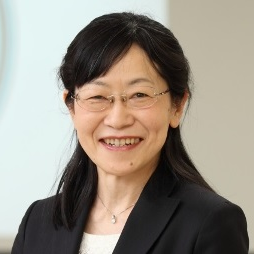Radiation in the Human Life—Environment and Medical Use
A special issue of Radiation (ISSN 2673-592X).
Deadline for manuscript submissions: closed (15 December 2022) | Viewed by 9073
Special Issue Editors
Interests: environmental radioactivity; radiation protection; radiation measurement
Interests: diagnostic imaging; computed tomography; magnetic resonance imaging; medical exposure
Interests: environmental radioactivity; radiation protection; radiation measurement
Special Issues, Collections and Topics in MDPI journals
Special Issue Information
Dear Colleagues,
We receive radiation exposure not only from natural sources such as radon and terrestrial radiation and human activity in occupational and medical settings in daily life, but also from nuclear accidents in emergency situations. Therefore, it is important to assess radiation doses from several sources in various situations to understand the human effects. On the other hand, radiation such as X-ray and γ-ray is essential in the hospital for early detection and treatment to potential disease. As a result, radiological technology for medical use has continued to evolve to adopt new technologies.
This Special Issue on “Radiation in Human Life—Environment and Medical Use” will focus on radiation in the environment and medical use covering radiation measurement, radiation protection, physics, chemical, biology, risk assessment and communication, imaging, diagnosis, and treatment, etc. All manuscripts will be peer reviewed by experts in the field.
Prof. Dr. Masahiro Hosoda
Prof. Dr. Yoko Saito
Prof. Dr. Shinji Tokonami
Guest Editors
Manuscript Submission Information
Manuscripts should be submitted online at www.mdpi.com by registering and logging in to this website. Once you are registered, click here to go to the submission form. Manuscripts can be submitted until the deadline. All submissions that pass pre-check are peer-reviewed. Accepted papers will be published continuously in the journal (as soon as accepted) and will be listed together on the special issue website. Research articles, review articles as well as short communications are invited. For planned papers, a title and short abstract (about 100 words) can be sent to the Editorial Office for announcement on this website.
Submitted manuscripts should not have been published previously, nor be under consideration for publication elsewhere (except conference proceedings papers). All manuscripts are thoroughly refereed through a single-blind peer-review process. A guide for authors and other relevant information for submission of manuscripts is available on the Instructions for Authors page. Radiation is an international peer-reviewed open access quarterly journal published by MDPI.
Please visit the Instructions for Authors page before submitting a manuscript. The Article Processing Charge (APC) for publication in this open access journal is 1000 CHF (Swiss Francs). Submitted papers should be well formatted and use good English. Authors may use MDPI's English editing service prior to publication or during author revisions.
Keywords
- environmental radiation
- radiation biology
- medical imaging
- radiation therapy
- nuclear imaging
- radiation protection
- radiation measurement
- risk assessment
- risk communication
- emergency preparedness and response





